- Why Proper Storage of Vegetables is Important in Winter
- Benefits of Proper Vegetable Storage
- Tips for Proper Vegetable Storage
- Preserving Nutritional Value of Vegetables
- Minimizing Food Waste
- Create a Meal Plan
- Properly Store and Preserve Vegetables
- Use Vegetable Scraps
- Donate Excess Vegetables
- Practice FIFO Method
- Buy Ugly Produce
- Educate Yourself
- Saving Money on Grocery Bills
- 1. Make a shopping list
- 2. Plan your meals
- 3. Buy in bulk
- 4. Shop for seasonal produce
- 5. Compare prices and brands
- 6. Utilize loyalty programs
- 7. Avoid shopping while hungry
- 8. Store food properly
- 9. Cook at home
- 10. Take advantage of leftovers
- Avoiding Spoilage and Mold
- Extending the Freshness of Harvested Vegetables
- 1. Clean and dry
- 2. Sort and separate
- 3. Choose the right storage containers
- 4. Control temperature and humidity
- 5. Avoid direct sunlight
- 6. Check regularly
- 7. Opt for long-term storage methods
- 8. Utilize root cellars or refrigerator
- Ensuring a Variety of Fresh Ingredients for Cooking
- 1. Plan Your Meals
- 2. Buy Seasonal Produce
- 3. Utilize Farmers Markets
- 4. Consider Frozen Options
- 5. Preserve and Store
- 6. Use Vegetables in Multiple Dishes
- 7. Try New Recipes
- 8. Grow Your Own
- Supporting Local Farmers and Sustainability
- Preparing for Emergencies and Natural Disasters
- Create an Emergency Kit
- Establish a Communication Plan
- Know Your Risks
- Stay Informed
- Secure Your Home
- Prepare Your Pets
- Practice Emergency Drills
- Build a Network
- Insurance and Documentation
- Stay Calm and Flexible
- “Question-Answer”
- Is it necessary to store vegetables in a cool place?
- Can I store all types of vegetables in the refrigerator?
- Can I freeze vegetables instead of storing them?
- “Video” How To Make Produce Last Longer & Reduce Waste 25+ Tips!
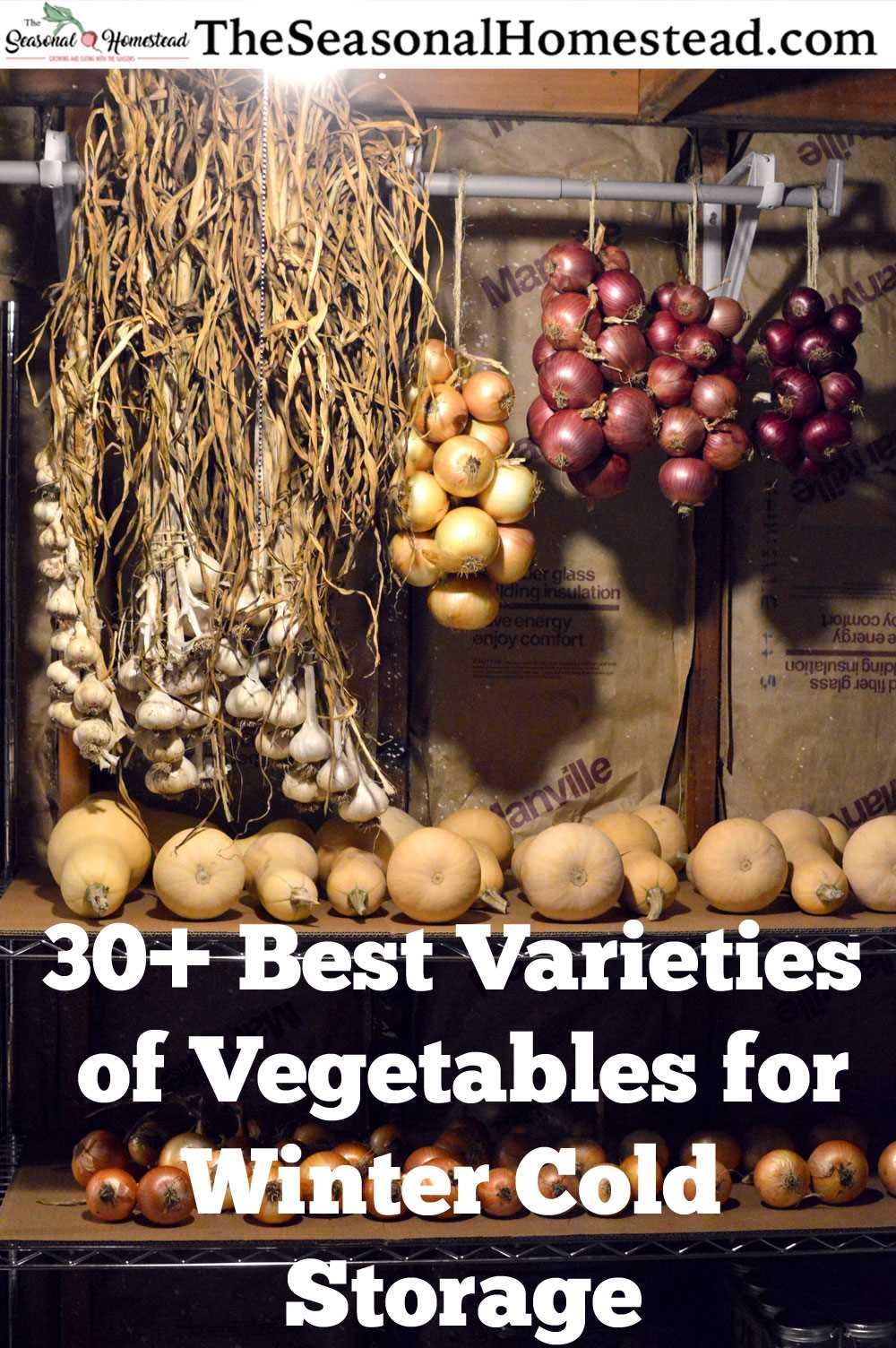
When it comes to storing vegetables in winter, it’s important to know how to do it properly to ensure they last as long as possible. Whether you have a garden or prefer to buy from local farmers markets, taking the time to store your vegetables correctly will save you money and provide you with fresh produce throughout the winter months.
One of the first things to consider is the temperature and humidity of your storage space. Most vegetables prefer cooler temperatures, around 40-50°F (4-10°C), and a humidity level of around 90%. This helps to prevent spoilage and keeps the vegetables fresh for longer. If you don’t have a basement or cellar, a cool corner of your garage or an unheated room in your house can work just as well.
Another important factor to consider is the type of vegetable you are storing. Some vegetables, like potatoes and onions, prefer a dark, dry environment, while others, like carrots and beets, need a slightly more humid environment to keep them from drying out. It’s important to do some research on the specific storage requirements for the vegetables you have before storing them, as different vegetables have different needs.
Lastly, proper storage containers can make a big difference in the longevity of your vegetables. Keep in mind that some vegetables, like potatoes and onions, should not be stored together as they emit gases that can cause spoilage. It’s also important to check your vegetables regularly for any signs of spoilage and remove any that are starting to go bad to prevent further contamination.
By following these helpful tips and advice, you can ensure that your winter supply of vegetables stays fresh and delicious throughout the colder months. Proper storage techniques will not only save you money, but also provide you with a healthy and enjoyable source of fresh produce all winter long.
Why Proper Storage of Vegetables is Important in Winter
During the winter months, it is crucial to properly store vegetables to ensure their freshness and longevity. Proper storage practices can help to prevent spoilage, preserve nutritional value, and extend the availability of fresh produce throughout the colder months.
Benefits of Proper Vegetable Storage
- Preventing spoilage: Proper storage techniques can help to prevent vegetables from spoiling prematurely. By maintaining the right temperature and humidity levels, you can minimize the growth of bacteria and mold, which contribute to spoilage.
- Preserving nutritional value: Vegetables are a valuable source of essential vitamins and minerals. By storing them properly, you can help to retain their nutritional content. Exposure to light, oxygen, and improper storage conditions can lead to nutrient loss, so it’s crucial to handle vegetables carefully.
- Extending availability: Properly stored vegetables can provide a fresh and healthy food source, even during the winter months when local produce may be scarce. By storing vegetables correctly, you can extend their shelf life and continue to enjoy their flavors and benefits throughout the season.
Tips for Proper Vegetable Storage
- Temperature control: Most vegetables prefer cool temperatures between 32-50°F (0-10°C). It’s important to store them away from heat sources such as radiators or direct sunlight. A cool basement or garage can be ideal storage locations.
- Humidity regulation: Vegetables have varying humidity requirements. Some, like leafy greens, prefer high humidity, while others, like onions, prefer lower humidity. Consider using perforated bags or containers to maintain the right levels of moisture for each vegetable.
- Avoiding ethylene producers: Some fruits and vegetables, such as apples and tomatoes, release a gas called ethylene that can accelerate ripening and spoilage in nearby produce. To prevent this, store ethylene-producing items separately from other vegetables.
- Proper cleaning and drying: Before storing vegetables, make sure to remove any dirt or debris. Washing them can help to remove bacteria and extend their shelf life. However, it’s essential to dry them thoroughly before storage to prevent rotting.
- Checking for freshness: Regularly inspect stored vegetables for signs of spoilage, such as mold, soft spots, or unpleasant odors. Remove any affected produce to prevent the spread of decay to other vegetables.
By following these tips for proper vegetable storage, you can ensure that your winter supply of fresh produce remains nutritious and delicious throughout the season.
Preserving Nutritional Value of Vegetables
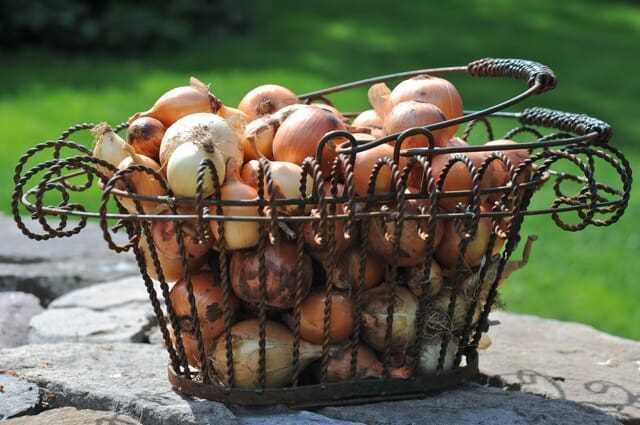
When storing vegetables in winter, it is important to preserve their nutritional value as much as possible. Here are some tips to help you achieve this:
- Choose the right vegetables: Not all vegetables are suitable for long-term storage. Select vegetables that have a longer shelf life, such as root vegetables (carrots, beets, potatoes) and winter squash.
- Harvest at the right time: Harvest vegetables at their peak of ripeness. This is when they have the highest nutritional value. Avoid harvesting vegetables too early or too late.
- Handle with care: Handle vegetables with care to prevent bruising and damage. Bruised vegetables can quickly spoil and lose their nutritional value.
- Remove leaves and stems: Before storing, remove any leaves and stems from the vegetables. This will help prevent moisture loss and decay.
- Store in cool and dark conditions: Most vegetables prefer cool and dark conditions for storage. Keep them in a root cellar, cool basement, or refrigerator to maintain their freshness and nutritional value.
- Avoid exposure to light: Light can cause certain vegetables to produce chlorophyll, which can affect their taste and nutritional quality. Keep vegetables in opaque containers or wrap them in dark, breathable material.
- Control temperature and humidity: Different vegetables have different temperature and humidity requirements. Use a thermometer and hygrometer to monitor and adjust the storage conditions accordingly.
- Check regularly for spoilage: Regularly inspect stored vegetables for any signs of spoilage or decay. Remove any affected vegetables immediately to prevent the spread of spoilage to other vegetables.
- Consider preservation methods: If you have excess vegetables, consider preserving them through methods like canning, freezing, or drying. These methods can help retain the nutritional value of vegetables for a longer period of time.
By following these tips, you can ensure that your winter-stored vegetables retain their nutritional value, allowing you to enjoy their goodness throughout the season.
Minimizing Food Waste
Food waste is a major issue that contributes to environmental problems and economic losses. By taking some simple steps, you can minimize food waste and make the most of your vegetables during the winter months.
Create a Meal Plan
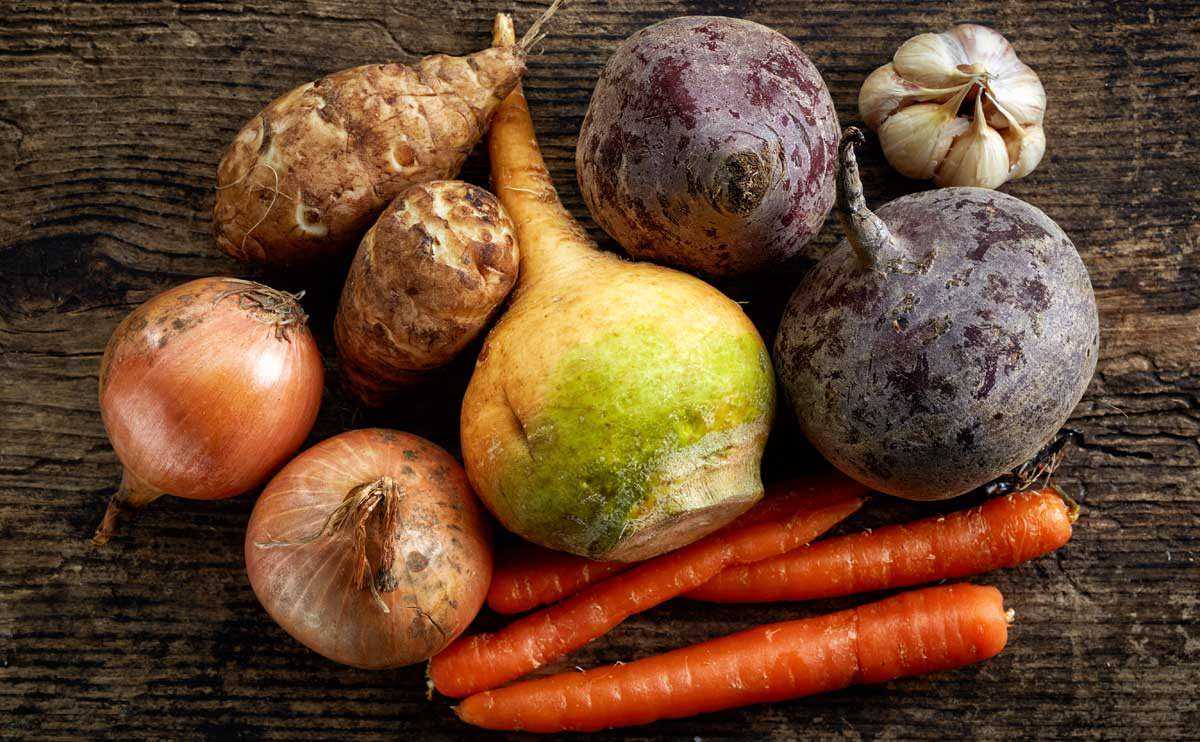
Planning your meals in advance can help you buy only the necessary ingredients and avoid overbuying vegetables. By knowing exactly what you need, you can reduce the chances of unused vegetables going to waste.
Properly Store and Preserve Vegetables
Storing vegetables correctly can extend their shelf life and prevent spoilage. Some general guidelines for vegetable storage include:
- Keep root vegetables like carrots, beets, and potatoes in a cool, dark place like a cellar or basement.
- Leafy greens such as lettuce and spinach should be stored in a perforated plastic bag in the refrigerator to maintain freshness.
- Store onions and garlic in a dry, well-ventilated area away from sunlight.
In addition to proper storage, consider preserving vegetables through methods like pickling, freezing, or canning. These techniques can help extend the lifespan of your vegetables and reduce food waste.
Use Vegetable Scraps
Instead of throwing away vegetable scraps, consider repurposing them. Vegetable scraps like carrot tops, celery leaves, and onion peels can be used to make flavorful stocks or broths. You can also compost vegetable scraps to create nutrient-rich soil for your garden.
Donate Excess Vegetables
If you find yourself with more vegetables than you can consume, consider donating them to local food banks or community organizations. This not only helps reduce waste but also supports those in need.
Practice FIFO Method
First In, First Out (FIFO) is a food storage method that involves using older items before newer ones. This ensures that vegetables with a shorter shelf life are used first, reducing the chances of spoilage.
Buy Ugly Produce
Many vegetables that are considered “ugly” or imperfect are often discarded by grocery stores or farmers. By purchasing imperfect produce, you can help reduce food waste and support sustainable farming practices.
Educate Yourself
Stay informed about proper food storage, expiration dates, and ways to repurpose leftovers. Educating yourself on these topics can help you make better choices and reduce food waste in your household.
By implementing these strategies, you can minimize food waste and make a positive impact on both the environment and your budget.
Saving Money on Grocery Bills
When it comes to saving money on grocery bills, there are several strategies you can implement. These tips and tricks will help you stretch your budget and make the most of your trips to the grocery store.
1. Make a shopping list
One of the best ways to save money on groceries is to make a shopping list before you go to the store. This will help you avoid impulse buying and ensure that you only purchase the items you need.
2. Plan your meals
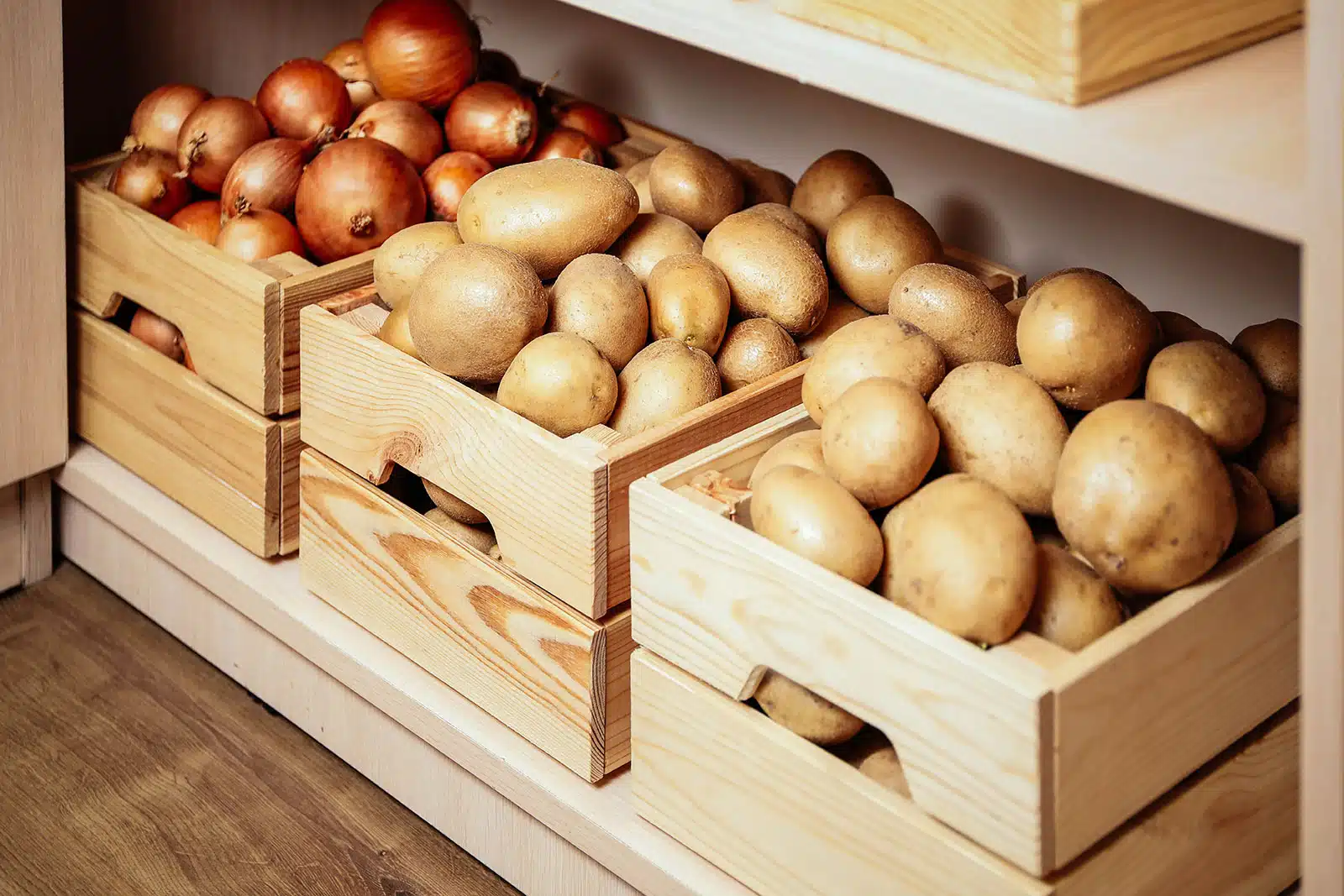
Planning your meals in advance can also help you save money. By knowing exactly what you will be cooking for the week, you can make a more accurate shopping list and avoid buying unnecessary items.
3. Buy in bulk
Buying in bulk can save you a significant amount of money in the long run. Look for deals and discounts on larger quantities of staple items that you frequently use. Just make sure to check the expiration dates and storage requirements before making a purchase.
4. Shop for seasonal produce
Buying fruits and vegetables that are in season can save you money as they are usually more abundant and therefore cheaper. Additionally, they tend to be fresher and taste better.
5. Compare prices and brands
Don’t be afraid to compare prices and brands when shopping. Sometimes, the store brand can be just as good as the name brand but at a much lower cost. Take advantage of sales and coupons to get the best deals.
6. Utilize loyalty programs
If your grocery store offers a loyalty program, sign up for it. These programs often provide discounts, special promotions, and even cashback or rewards points that can be redeemed for future purchases.
7. Avoid shopping while hungry
Shopping on an empty stomach can lead to impulse purchases of unhealthy and expensive items. Eat a snack or meal before heading to the store to avoid falling into this trap.
8. Store food properly
Properly storing food can help prevent waste and save you money. Learn how to store different types of food, including fruits, vegetables, dairy products, and meats, to ensure their longevity.
9. Cook at home
Instead of eating out or ordering takeout, try cooking meals at home. Not only will this save you money, but you’ll also have more control over the ingredients and portion sizes, which can contribute to a healthier lifestyle.
10. Take advantage of leftovers
Don’t let leftovers go to waste. Plan meals around using up any excess food from previous meals. This not only saves you money but also reduces food waste.
By implementing these strategies, you can save money on your grocery bills and make your budget go further. Remember to be conscious of your spending, plan ahead, and take advantage of discounts and promotions whenever possible.
Avoiding Spoilage and Mold
- Inspect regularly: It’s important to inspect your vegetables regularly to identify any spoiled or moldy ones. This will help prevent the spread of mold or bacteria to other vegetables.
- Separate ethylene producers: Some vegetables produce a natural gas called ethylene, which can accelerate the ripening process and lead to spoilage. To avoid this, make sure to store ethylene producers, such as bananas and tomatoes, separately from other vegetables.
- Remove damaged vegetables: If you notice any vegetables with bruises, cuts, or signs of decay, remove them immediately. Damaged vegetables can promote the growth of mold and bacteria, affecting the other vegetables in close proximity.
- Keep moisture levels in check: Excess moisture can cause vegetables to spoil quicker or encourage the growth of mold. Make sure the storage area is well-ventilated and not overly humid. Consider using a dehumidifier if necessary.
- Avoid washing before storage: Washing vegetables before storing them can introduce moisture, making them prone to spoilage. Instead, wait until you’re ready to use them before washing.
- Wrap or bag leafy vegetables: Leafy vegetables like lettuce or spinach can benefit from being wrapped in damp paper towels or stored in a breathable bag to retain moisture and prevent wilting.
- Store root vegetables separately: Root vegetables like carrots and potatoes should be stored separately from other vegetables. They can release moisture and gases that can cause other vegetables to spoil faster.
- Provide proper airflow: Proper airflow can help prevent the buildup of moisture, which can lead to mold growth. Avoid overcrowding vegetables and leave space between them for air circulation.
- Use appropriate storage containers: Certain vegetables require specific storage conditions. Using proper storage containers like perforated plastic bags for onions or mesh bags for potatoes can help maintain their freshness and prevent spoilage.
- Regularly clean storage area: To prevent the spread of mold and bacteria, make sure to regularly clean your storage area. Wipe down shelves or bins with mild soap and water and allow them to air dry before storing vegetables.
By following these tips, you can ensure that your vegetables stay fresh and free from spoilage during the winter months. Proper storage techniques are essential for maximizing the lifespan of your vegetables and reducing waste.
Extending the Freshness of Harvested Vegetables
After harvesting your vegetables, it is important to store them properly in order to extend their freshness and preserve their nutritional value. With the right storage techniques, you can enjoy your homegrown produce for longer periods of time. Here are some helpful tips:
1. Clean and dry
Before storing, make sure to remove any dirt or excess moisture from your vegetables. Gently brush off the dirt and allow them to dry completely. This will help prevent rotting and the growth of mold or bacteria.
2. Sort and separate
Sort your vegetables according to their type and store them separately. Certain vegetables emit gases that can speed up the ripening process of others. By separating them, you can prevent premature spoilage.
3. Choose the right storage containers
Opt for breathable containers or bags that allow air circulation. This helps prevent moisture build-up and prolongs the freshness of your vegetables. Avoid using plastic bags or airtight containers as they can trap moisture and promote rotting.
4. Control temperature and humidity
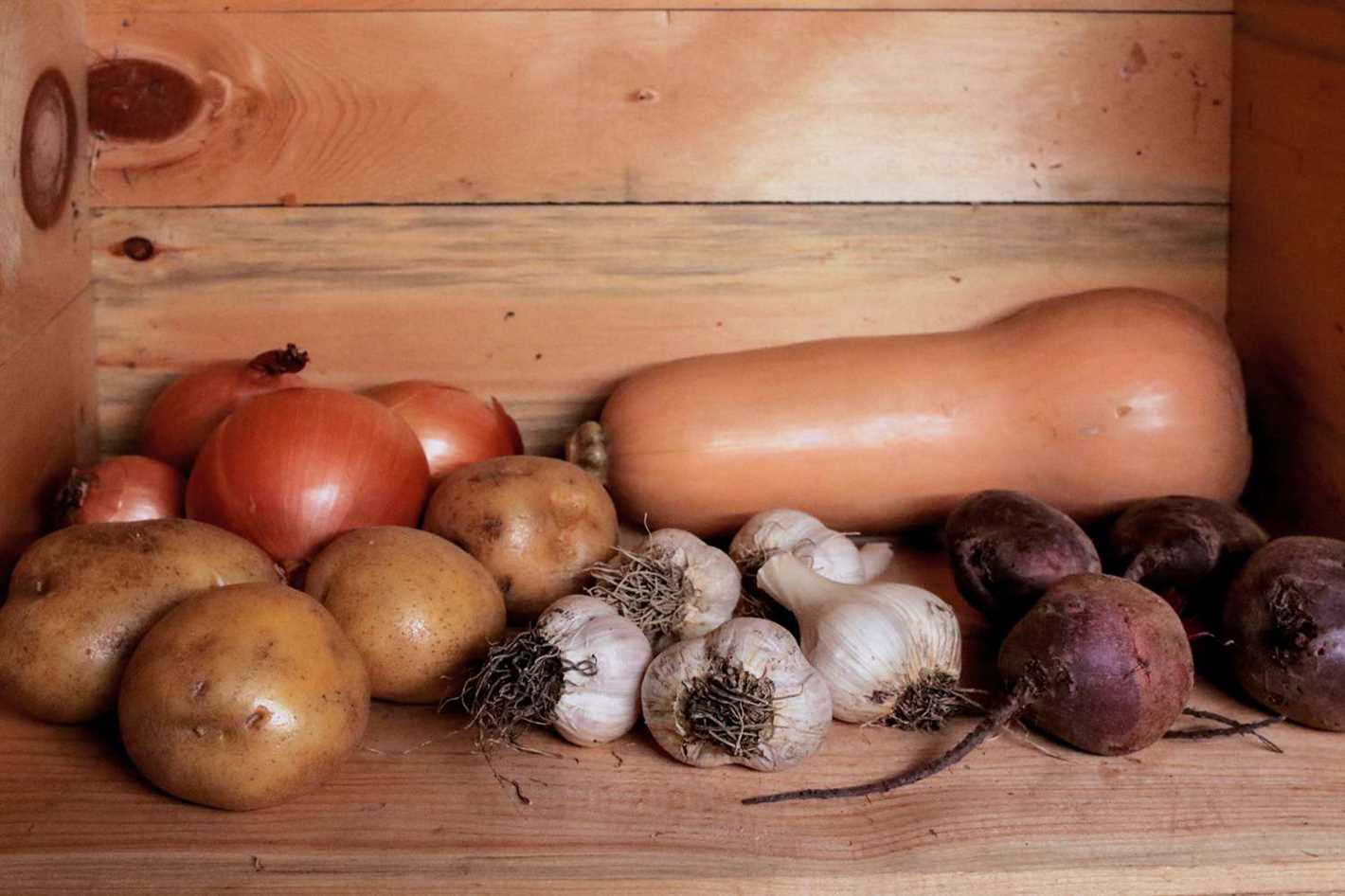
Most vegetables prefer cool and slightly humid conditions. Store them in a basement, cellar, or cool area of your home. The temperature should ideally be around 40-50°F (4-10°C) with humidity levels between 85-95%. Consider using a thermometer and a hygrometer to monitor the conditions.
5. Avoid direct sunlight
Exposure to sunlight can accelerate the deterioration of vegetables. Store them in a dark area to maintain their freshness and prevent the loss of nutrients.
6. Check regularly
Inspect your stored vegetables regularly and remove any spoiled or rotting ones. This will prevent the spread of decay and ensure the longevity of the remaining produce.
7. Opt for long-term storage methods
If you have excess vegetables that need to be stored for an extended period, consider preserving them through canning, freezing, or drying. These methods help maintain the flavor and nutritional content of the vegetables.
8. Utilize root cellars or refrigerator
If you have access to a root cellar or a refrigerator with adjustable humidity settings, these can be ideal for storing certain vegetables. Root cellars provide cool and slightly humid conditions, while refrigerators can help maintain the freshness of leafy greens and other delicate vegetables.
By following these tips, you can prolong the freshness of your harvested vegetables and enjoy their flavors and nutrients throughout the winter months.
Ensuring a Variety of Fresh Ingredients for Cooking
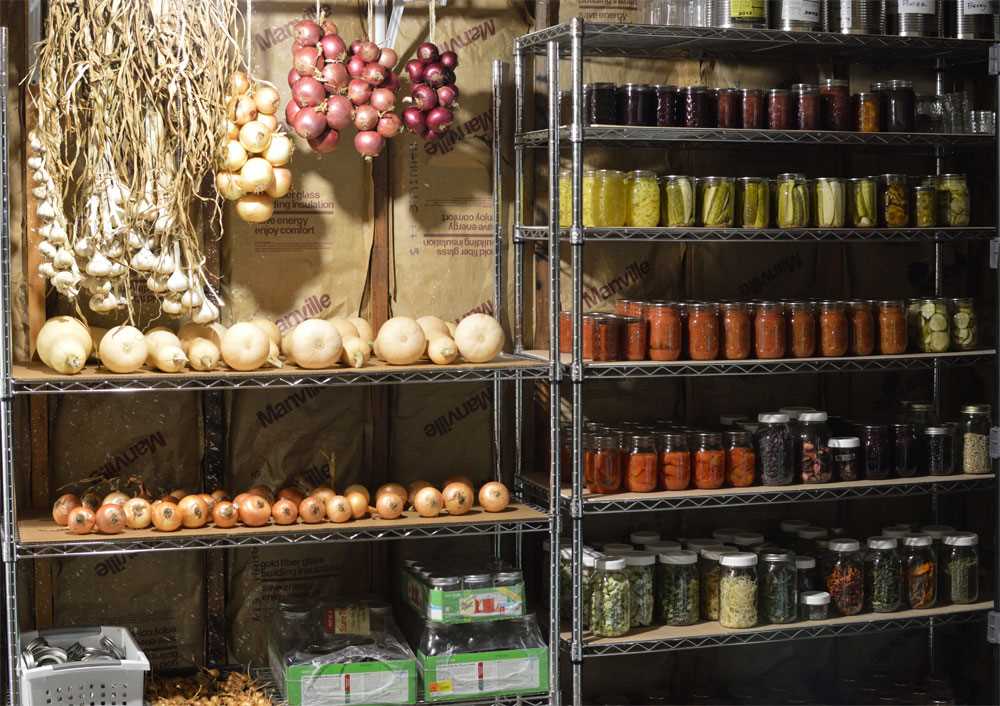
When it comes to cooking, having a variety of fresh ingredients is essential to create delicious and wholesome meals. Here are some helpful tips to ensure you always have a diverse range of ingredients at hand:
1. Plan Your Meals
Before heading to the grocery store, take some time to plan your meals for the week. This will help you determine the ingredients you need and avoid buying excess vegetables that may go to waste.
2. Buy Seasonal Produce
Choosing seasonal produce is not only more environmentally friendly but also ensures that you are getting the freshest ingredients. Seasonal vegetables tend to be more flavorful and packed with nutrients.
3. Utilize Farmers Markets
Visit local farmers markets to find a wider variety of fresh vegetables. Farmers markets often have specialty or heirloom varieties that you may not find in regular grocery stores. Plus, buying directly from farmers supports local agriculture.
4. Consider Frozen Options
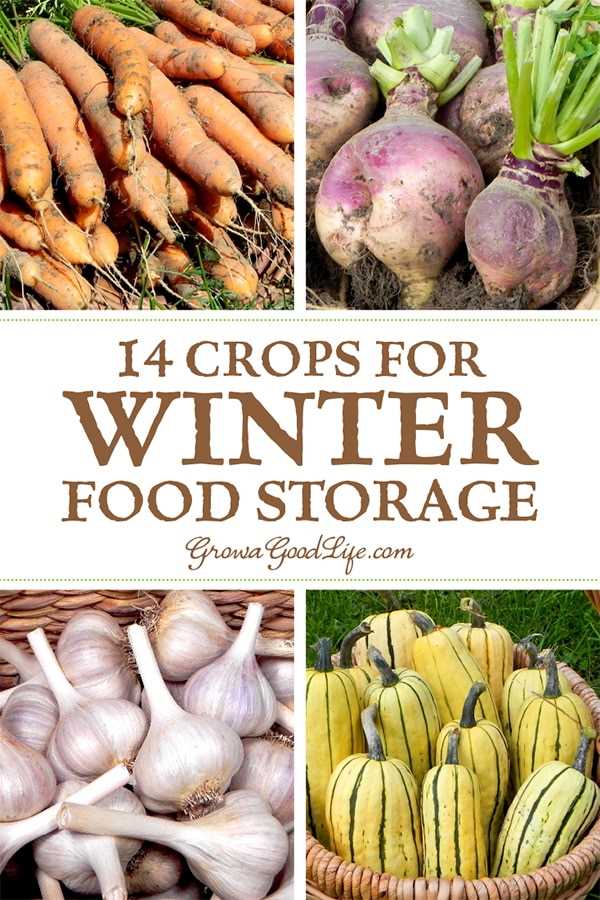
If fresh produce is not available or not within your budget, consider using frozen vegetables. Frozen vegetables are often picked at their peak ripeness and retain most of their nutritional value. They are a convenient option for adding variety to your meals.
5. Preserve and Store
If you have access to fresh produce during the growing season, consider preserving or storing them for the winter months. Canning, freezing, or drying vegetables can help you maintain a variety of ingredients throughout the year.
6. Use Vegetables in Multiple Dishes
To avoid waste, try to incorporate vegetables into multiple dishes. For example, if you have leftover roasted or steamed vegetables, use them in a salad, pasta dish, or stir-fry the next day. This way, you can enjoy different flavors and textures without letting anything go to waste.
7. Try New Recipes
Keep things interesting in the kitchen by trying new recipes that feature different vegetables and flavor profiles. This will encourage you to expand your culinary horizons and keep your meals exciting.
8. Grow Your Own
If you have the space and resources, consider growing your own vegetables. This not only ensures a variety of fresh ingredients but also allows you to control the growing process and avoid harmful chemicals.
With these tips, you can ensure a diverse range of fresh ingredients for cooking, even during the winter months. Enjoy experimenting with different flavors and creating delicious meals!
Supporting Local Farmers and Sustainability
Supporting local farmers and embracing sustainable agricultural practices is not only beneficial for our communities and the environment, but it is also a great way to enjoy fresh, high-quality produce throughout the year. By purchasing fruits and vegetables from local farmers, we can contribute to the growth of our local economy and reduce the carbon footprint associated with long-distance transportation.
There are several ways to support local farmers and promote sustainability:
- Buy from farmers’ markets: Visit your local farmers’ market to find a wide variety of fresh, locally grown produce. These markets offer an opportunity to connect directly with the farmers, learn about their cultivation practices, and support their businesses.
- Join a community-supported agriculture (CSA) program: CSA programs allow consumers to buy a share of a local farm’s harvest in advance. This not only guarantees a regular supply of fresh produce but also helps farmers financially by providing them with upfront capital.
- Shop at farm stands: Many farmers have roadside stands where they sell their produce directly to customers. These stands are often conveniently located along popular routes and provide an opportunity to support local agriculture while enjoying a scenic drive.
As we support local farmers, it is essential to prioritize sustainability in our consumption habits. Here are some tips:
- Choose organic and sustainable practices: Look for farmers who follow organic farming methods or use sustainable growing practices. Organic farming eliminates the use of synthetic pesticides and fertilizers and focuses on promoting soil health and biodiversity.
- Reduce food waste: Buy only what you need and store your vegetables properly to prevent spoilage. Utilize leftovers in creative ways or consider composting them to reduce waste and nourish your garden.
- Participate in local food initiatives: Engage with local organizations and initiatives that promote sustainability and support local farmers. These initiatives may include community gardens, food cooperatives, or educational programs.
Supporting local farmers and embracing sustainable practices not only benefits our communities and the environment but also allows us to enjoy fresh, nutritious produce that contributes to our overall well-being. By making conscious choices in our purchasing habits, we can make a positive impact on our local economy and the future of our planet.
Preparing for Emergencies and Natural Disasters
When it comes to emergencies and natural disasters, being prepared can make a big difference. Here are some essential steps to take to ensure you’re ready for any unforeseen event:
Create an Emergency Kit
Put together an emergency kit that includes essential items you would need in case of an emergency or natural disaster. This kit should include non-perishable food, water, first aid supplies, flashlights, batteries, a battery-powered or hand-crank radio, blankets, and a whistle. Make sure to periodically check and replace any expired items.
Establish a Communication Plan
It’s important to have a communication plan in place so that you can stay in touch with your family members and loved ones during an emergency. Determine a meeting place and make sure everyone knows how to contact each other, including an out-of-state contact person, as local communication may be disrupted.
Know Your Risks
Take the time to understand the types of emergencies and natural disasters that are most common in your area. This could include hurricanes, earthquakes, floods, or wildfires. Being aware of the potential risks will help you make informed decisions and take appropriate steps to protect yourself and your family.
Stay Informed
Stay updated with emergency alerts and warnings by signing up for alerts from local emergency management agencies or downloading relevant mobile applications. Listen to news reports and follow local authorities on social media to stay informed about the situation and any evacuation orders or instructions.
Secure Your Home
Take steps to secure your home to minimize potential damage during an emergency or natural disaster. This could involve reinforcing windows and doors, securing loose objects in your yard, or installing hurricane shutters or seismic straps. Regular maintenance of your home, such as trimming trees and cleaning gutters, can also help prevent damage.
Prepare Your Pets
If you have pets, ensure their safety by including them in your emergency plans. Keep a supply of pet food, water, and any necessary medications. Have a carrier or leash readily available, and provide identification tags and microchips for your pets. Research pet-friendly evacuation shelters in case you need to evacuate.
Practice Emergency Drills
Regularly practice emergency drills with your family to ensure that everyone knows what to do in case of an emergency. This will help you identify any gaps in your plan and ensure that everyone is familiar with evacuation routes and emergency procedures.
Build a Network
Consider joining or building a network of neighbors or community members who can support each other during emergencies. This could involve sharing resources, checking on vulnerable individuals, or coordinating evacuation plans. Working together can make a significant difference in emergency situations.
Insurance and Documentation
Review your insurance policies to ensure they cover the potential risks in your area. Take photos or videos of your home and valuable possessions as documentation for insurance purposes. Store important documents, such as identification papers and insurance policies, in a waterproof and fireproof container.
Stay Calm and Flexible
During an emergency, it’s essential to stay calm and flexible. Be prepared to adapt your plans as the situation evolves and follow the instructions of local authorities. Having a positive mindset and maintaining clear communication with your family and community can help mitigate the impact of an emergency or natural disaster.
By taking these proactive steps, you can be better prepared to face emergencies and natural disasters and protect yourself, your family, and your home.
“Question-Answer”
Is it necessary to store vegetables in a cool place?
Yes, it is necessary to store vegetables in a cool place to prevent them from spoiling. Many vegetables, like root vegetables and leafy greens, prefer cool temperatures to remain fresh and extend their shelf life. Storing them in a cool place helps to slow down the process of decay and keeps them fresh for a longer time.
Can I store all types of vegetables in the refrigerator?
No, not all types of vegetables should be stored in the refrigerator. While some vegetables, like leafy greens, should be stored in the refrigerator to maintain their freshness, others, like potatoes and onions, should be stored in a cool, dark place outside of the refrigerator. Storing certain vegetables in the refrigerator can result in a loss of flavor and texture. It is important to know the storage requirements of each type of vegetable to keep them fresh.
Can I freeze vegetables instead of storing them?
Yes, freezing vegetables is a good option for long-term storage. However, not all vegetables freeze well. Some vegetables, like tomatoes and cucumbers, have a high water content and do not freeze well. Vegetables like carrots, peas, and green beans, on the other hand, freeze very well. It is important to blanch vegetables before freezing them to preserve their color, flavor, and texture. Proper packaging, such as using freezer bags or containers, is also important to prevent freezer burn. Make sure to research the specific freezing requirements for each type of vegetable before freezing.







